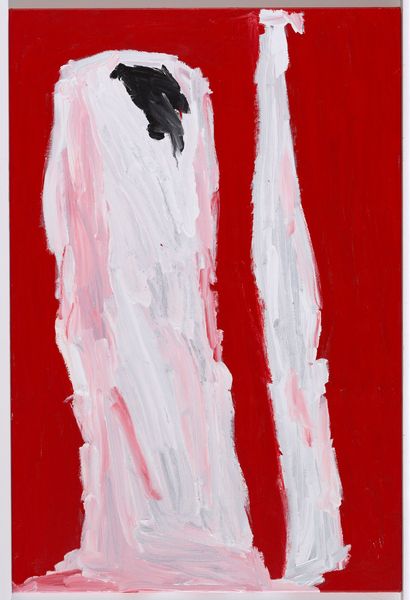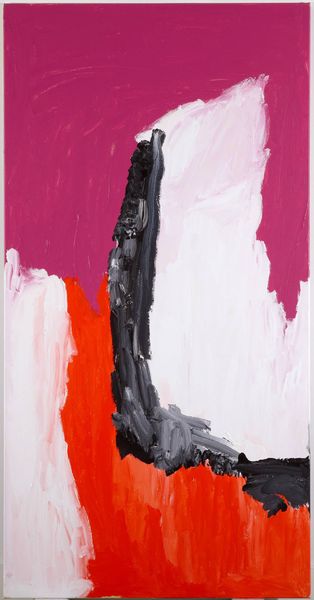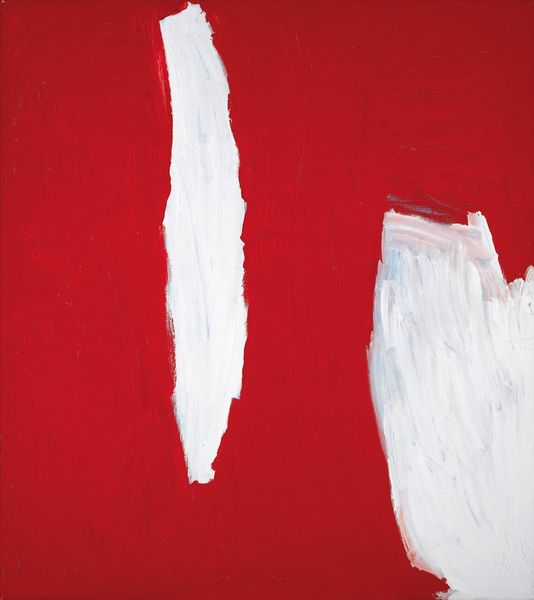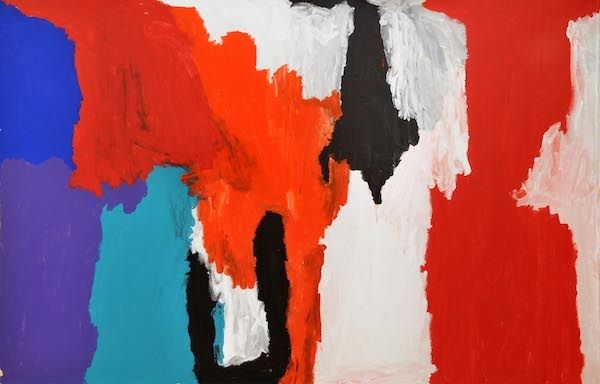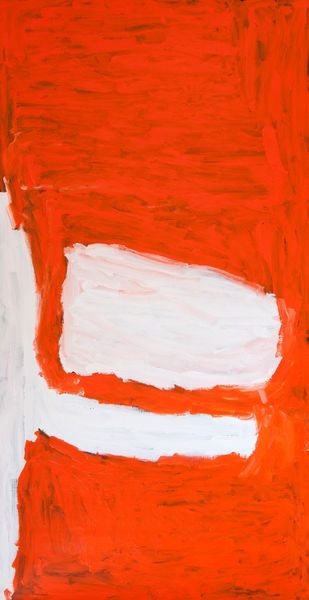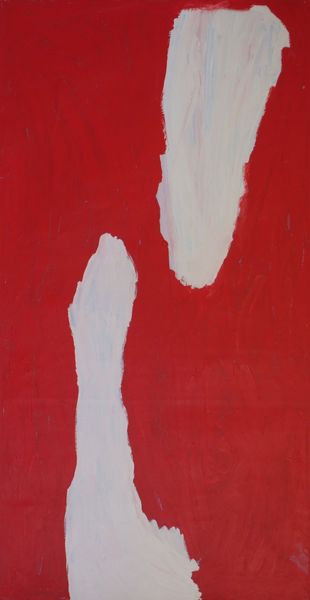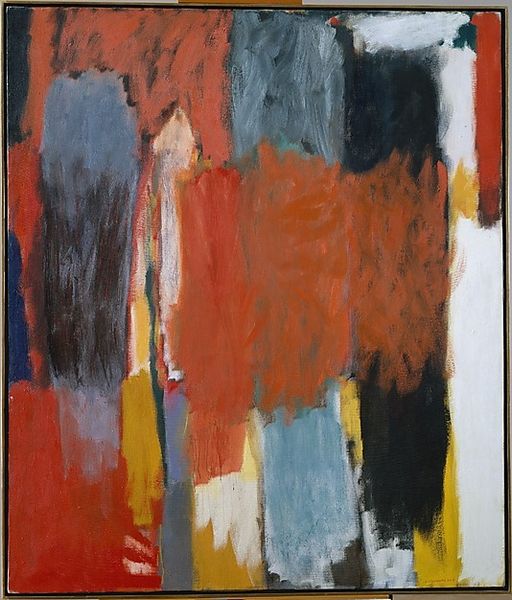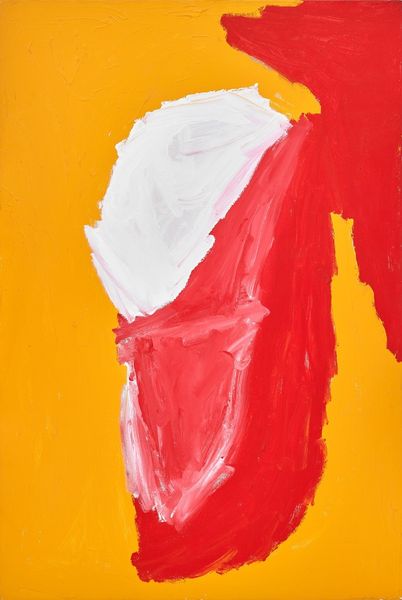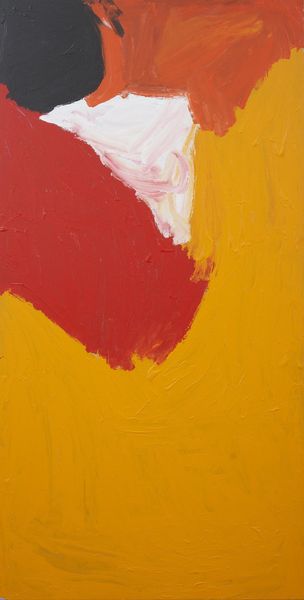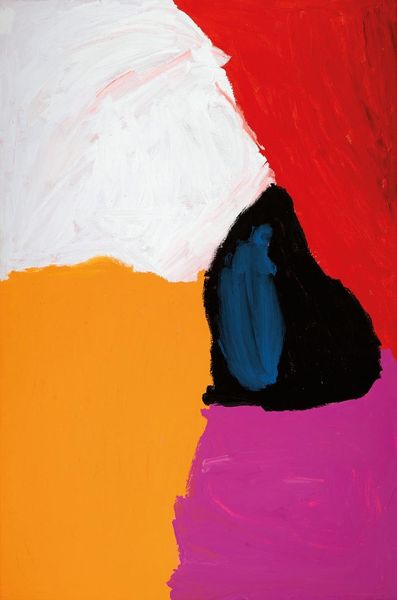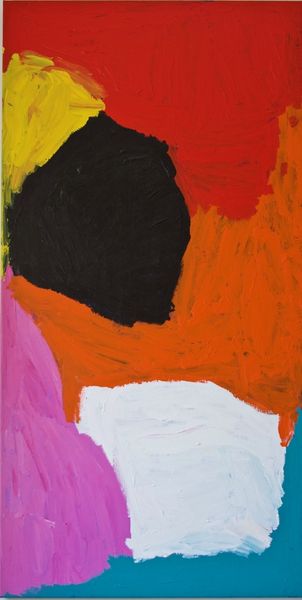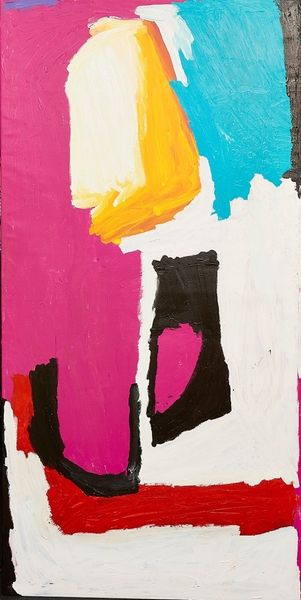
Copyright: Sally Gabori,Fair Use
Curator: "My Country" from 2009, by Sally Gabori. She used acrylic on canvas to construct it. What's your initial read of this? Editor: It hits with a certain rawness. Bold blocks of red, white, and black. You can almost feel the texture, the impasto. Curator: Precisely. Observe the composition; it is less about mimetic representation and more about the spatial dynamics, a negotiation of planes. The chromatic intensity contributes to an immediate and powerful experience. Editor: I'm struck by what must've been Gabori's process. The physicality involved in laying down those thick swathes of paint, the labor, you can almost feel it resonating in the finished product. It disrupts a singular art-making genius, you know? It points more to material reality. Curator: Material certainly plays a pivotal role here. Look at the confident, almost gestural quality in the application. But I am intrigued by the underlying structure. Consider the implied lines and the way they create a sort of scaffolding, ordering our gaze. There is formalism in the very act of abstraction. Editor: True. And isn’t it also that very formal structure and those painterly actions a recording device for history, a place, perhaps an entire network of meaning for Gabori’s community on Mornington Island? Think about her life as a textile artist too, these colours and structures mirror techniques and aesthetics deeply rooted in her traditional craft. Curator: That provides a fascinating lens. The intersection of personal memory and collective history becomes quite palpable when considering her broader artistic output. The tension of what is said and unsaid generates immense possibilities in interpreting her work. Editor: Exactly. And to go further, let’s really analyze Gabori’s position and look into what it means when Indigenous women embrace new modes of representation—pushing Western material to rearticulate longstanding notions of country and identity. Curator: A rewarding insight indeed, emphasizing the agency of the artist. The piece’s visuality transcends formal constraints; it establishes connections to a vibrant heritage. Thank you for this perspective. Editor: It just reminds us of what we should always be doing—remembering art doesn’t exist in a vacuum, and even abstraction like this is often deeply entwined with physical labour, social realities, and our broader human story.
Comments
No comments
Be the first to comment and join the conversation on the ultimate creative platform.
